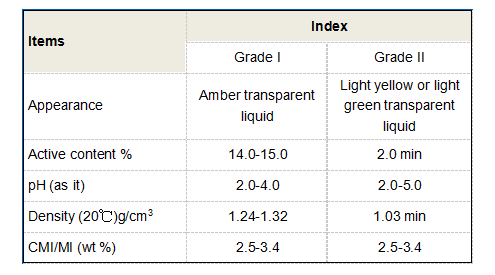Applications and Benefits of Cationic Polyacrylamide in Various Industries
Cationic Polyacrylamide Versatile Applications and Benefits
Cationic polyacrylamide (CPAM) is a synthetic polymer that has garnered significant attention across various industries due to its unique properties and functionalities. This water-soluble polymer belongs to the class of polyacrylamides, with cationic groups that impart positive charges, enhancing its reactivity and effectiveness in numerous applications.
One of the foremost uses of cationic polyacrylamide is in the treatment of wastewater. Due to its ability to flocculate, or aggregate suspended particles, CPAM plays a crucial role in clarifying water and facilitating the removal of impurities. In municipal and industrial wastewater treatment plants, cationic polyacrylamide is utilized to enhance sedimentation rates, enabling the efficient separation of solid and liquid phases. This not only helps in improving water quality but also contributes to environmental sustainability by allowing for the recycling and reuse of water.
Cationic Polyacrylamide Versatile Applications and Benefits
Cationic polyacrylamide is also widely employed in the oil and gas industry, particularly in enhanced oil recovery (EOR) processes. The polymer's superior viscosity-enhancing properties allow for improved mobility control in reservoirs, facilitating better oil displacement during extraction. By adjusting the flow properties of water injected into oil wells, CPAM has been shown to increase the efficiency of oil recovery operations, making it a valuable asset for companies seeking to maximize output from existing fields.
cationic polyacrylamide uses

In the agriculture sector, cationic polyacrylamide has been adopted as a soil conditioner, with significant benefits for water management and erosion control. When applied to soil, CPAM enhances water retention, reduces surface crusting, and promotes better seedling establishment. This property is especially beneficial in arid regions where water scarcity can severely limit agricultural productivity. By improving soil structure and reducing erosion, cationic polyacrylamide contributes to increased crop yields and sustainable farming practices.
In addition to these applications, CPAM is finding its way into various other fields, such as cosmetics and personal care products, where it is used as a thickening agent and stabilizer. Its positive charge can enhance the formulation's stability and improve the sensory characteristics of products, making it appealing to manufacturers and consumers alike.
However, while cationic polyacrylamide offers numerous benefits, it is important to handle it with care. The polymer is sensitive to environmental conditions and may have implications for aquatic life if released into water bodies in large quantities. As with any chemical, responsible usage and adherence to regulations are imperative to ensure safety and minimize environmental impact.
In conclusion, cationic polyacrylamide is a versatile polymer with a broad range of applications across various industries, including wastewater treatment, paper manufacturing, oil recovery, and agriculture. Its effectiveness in enhancing processes and improving product quality makes it a valuable component in modern industrial practices. As industries continue to evolve and strive for sustainability, the role of cationic polyacrylamide is likely to expand, further emphasizing its importance in our daily lives.
-
Water Treatment with Flocculant Water TreatmentNewsJun.12,2025
-
Polymaleic AnhydrideNewsJun.12,2025
-
Polyaspartic AcidNewsJun.12,2025
-
Enhance Industrial Processes with IsothiazolinonesNewsJun.12,2025
-
Enhance Industrial Processes with PBTCA SolutionsNewsJun.12,2025
-
Dodecyldimethylbenzylammonium Chloride SolutionsNewsJun.12,2025





